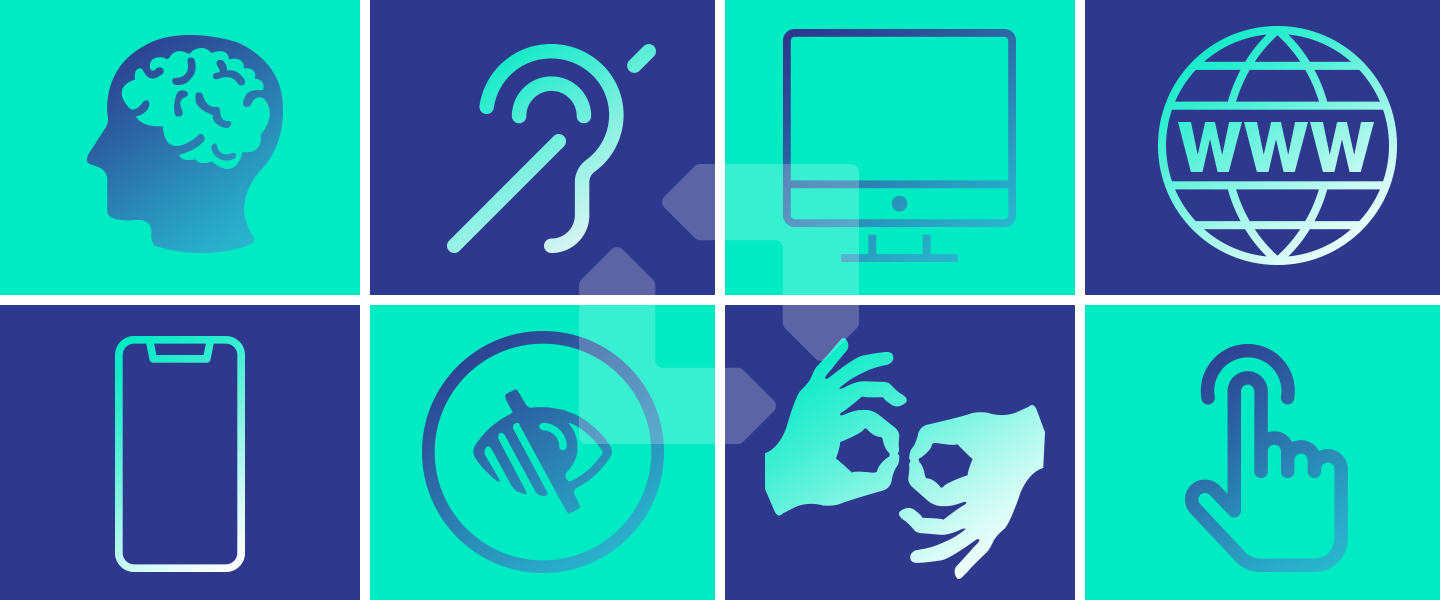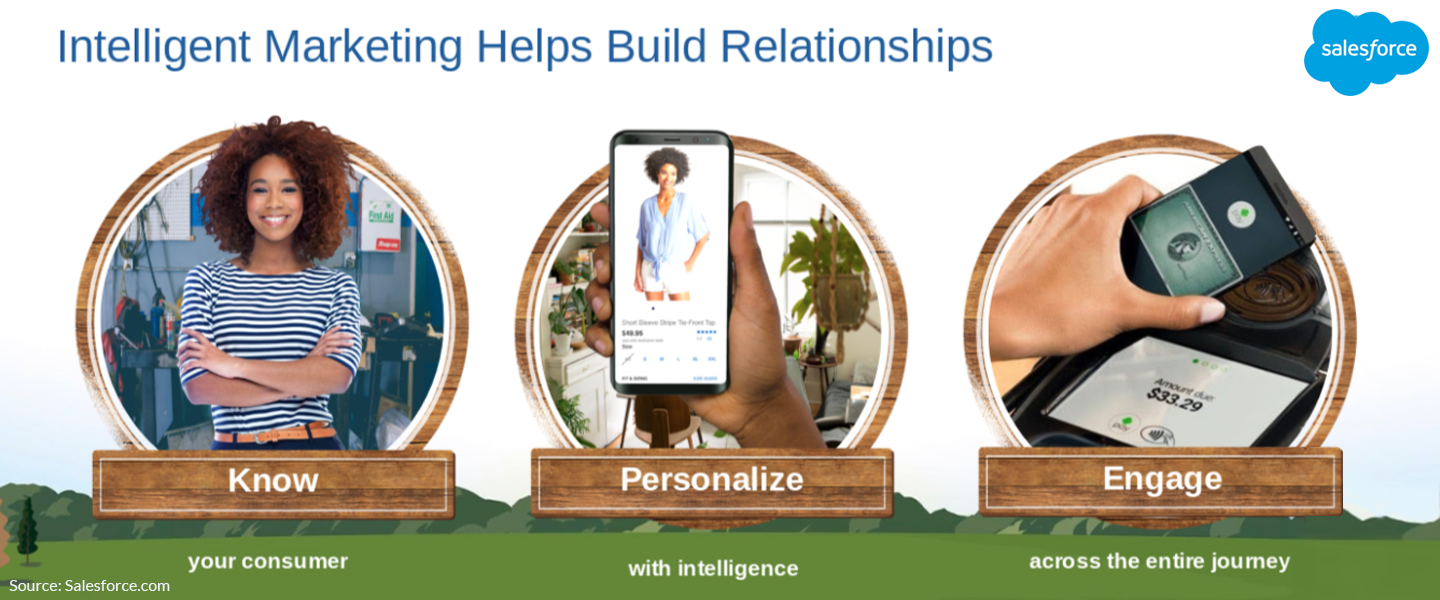Make Straight A’s: How to Ensure Your Website Meets Government Accessibility Requirements
Adopting an ethical design approach to create meaningful accessibility for all
More than 6 million Canadians over the age of 15 – roughly 22% of the population – report having a significant disability that limits their daily activities. At the same time, 1,000 Canadians turn 65 years of age each day as the North American population continues to age.
That means that, more than ever before, your customers have accessibility requirements to not only use your website but to take part in your overall customer experience.
As the diverse accessibility needs of these rapidly growing cohorts of customers become more crucial than ever to address, all industries will need to continuously evolve their thinking and adapt their practices to this new normal.
“Your website needs to continuously evolve, just like real people do. Inclusion is part of the conversation, but when it comes to integrating ethical design practices to make a real difference, businesses need to know that it’s everyone’s job and create processes where everyone actively helps to make it happen.”
Anton Morrison, VP of Experience & Design
Though long overdue, this shift in awareness was reflected when Canada introduced its first-ever federal accessibility legislation, the Accessible Canada Act, in 2019. Enacted to “proactively eliminate and prevent barriers and ensure greater opportunities for persons with disabilities,” it mandates a variety of sectors to:
- create service design and delivery that works for everyone
- build access to employment opportunities and accessible workspaces
- make digital and information content and technologies more accessible
Without any attention to accessibility, navigating websites can be difficult – even impossible – for people with disabilities.
Whether for sales, service or talent acquisition, the practical application of accessible design improves the quality of life for everyone. Websites with a higher accessibility rating have a greater level of usability and higher search engine rankings which will increase your traffic and produce larger revenues.
The evolution of ethical design thinking
“The biggest barrier to real access is attitudinal barriers. These are the preconceived notions that accessibility is only important to a specific marginal group who don't even use our products or services. Or that accessibility can be sprinkled on top of an already finished product. We will only be truly accessible when we change perceptions about disability and modify our processes to reflect this. Inclusive design is for all of us. Regardless of our permanent, temporary or situational condition.”
Jussi Mikkonen, Director of Technology
While most of us are probably familiar with accessibility broadly, it has been common in the past to see accessibility as a compliance hurdle. Something that must be done and checked off a list, but not embraced.
As society as a whole has broadened its thinking on inclusion and the factors that drive it, mere web accessibility has expanded to encompass core principles of ethical design thinking.
In this context, ethical design best practices mean creating websites with the intent to do good. It’s not enough to create an improvement just for the sake of it but to proactively believe it’s necessary and a moral obligation.
“If a design does not support human rights, it is unethical. If it supports human rights but does not respect human effort by being functional, convenient and reliable (and usable!), then it is unethical. If it respects human effort but does not respect human experience by making a better life for the people using it, then it is still unethical.”
Anton Morrison, VP of Experience & Design
Your guidepost to creating accessibility: WCAG
The United Nations Convention on the Rights of Persons with Disabilities recognizes website accessibility as a basic human right. To protect and enable that right, the UN endorses the Web Content Accessibility Guidelines (WCAG).
Created by the Worldwide Web Consortium (W3C), WCAG is a series of standards, developed in cooperation by organizations and individuals around the world. Their goal is to create a single, unified approach for measuring and implementing web content accessibility that meets the real needs of individuals, organizations and governments internationally.
WCAG is the most universal standard for web content accessibility and provides benchmarks for businesses globally.
The WCAG documents explain how to make web content more accessible for people with disabilities, with “content” referring to both natural information – like text, images and sounds – as well as code or markup that defines site structure, presentation, and more.
How WCAG’s principles and levels impact your business
The most recent and widely adopted version WCAG 2.0, published in December 2008, and WCAG 2.1, published in June 2018. They each have 12-13 guidelines that are organized under four principles: Perceivable, Operable, Understandable and Robust.
After that, each principle contains testable success criteria organized into three levels: A, AA, and AAA. This gives developers a list of actionable tactics to help measure, and then improve upon, their own websites’ accessibility levels. They provide businesses with a methodology to objectively determine, through a combination of automated testing and human evaluation, which of the three levels their website currently complies with.
WCAG guidelines are backwards compatible, so each new iteration includes all success criteria from the previous versions. You don’t need to start first with Level A and work your way up. Any level you achieve will include all the necessary criteria for that level and any others under it.
WCAG 2.0 principles
WCAG 2.0 was intentionally built around principles, not just technology, as part of an ethical approach to frame accessibility around an emphasis on truly understanding the experience of users and customers, not just implementing from a checklist.
Following the guidelines isn’t truly ethical design if you don’t first know why they exist in the first place. Again, an ethical approach means you have to feel a true obligation to be better because it’s the right thing to do, and not merely to satisfy a compliance requirement.
When it comes time to build and measure your website’s accessibility through the lens of your customers, you want to make sure that your site can POUR.
- Perceivable
Many of the most common disabilities relate to the physical senses – sight, hearing, speech, etc. – and how users with differences in these areas perceive your website. The variety of perceivable experience is very wide, with some having relatively mild differences to those that rely on assistive technology to access information online. WCAG 2.0 focuses on sight, sound and touch, and its success criteria will help make sure that all users can effectively perceive and experience all the information on your site.
- Operable
The physical actions people take when browsing the web inform operability. Many users with motor difficulties, as well as those with sight impairments, use specialized keyboards to navigate your site instead of a mouse. Taking steps to ensure excellent keyboard-based navigation, avoiding setting time limits and assisting with form errors are some of the steps you can take to improve operability.
- Understandable
Each of these principles builds on the others, and it doesn’t matter how perceivable and operable your website is if users can’t understand it. Complex issues should be explained in clear terms with simple instructions. You must also avoid inconsistent and unexpected functions so that your site is simple to navigate and easy to interpret.
- Robust
Third-party technology, like web browsers and screen readers, needs to be able to create a rich and fulsome experience for your users who rely on it. Recognized standards, including clean HTML and CSS, are one way to help minimize the risk of turning away users because the technology they use can’t process your site correctly and efficiently.
WCAG 2.0 levels
WCAG 2.0 is framed out into three levels of conformance:
- Level A: the most basic web accessibility features
- Level AA: the biggest and most common barriers for disabled users
- Level AAA: the highest and most complex level of web accessibility
The level of accessibility you expect to reach is unique to each organization and individual. Though striving for Level AAA might feel right, it’s important not to let notions of perfectionism get in the way of taking real, immediate actions. Level A is a great place to start making meaningful progress right away.
That said, based on your location and size of your business there might be government-mandated requirements for your website.
Many governments have adopted Level AA as their benchmark as it targets the most common and problematic issues for the majority of web users. For example, the Accessibility for Ontarians with Disabilities Act (AODA) has legally required the majority of organizations in the province to meet Level A accessibility since 2014.
Starting January 1, 2021, all applicable organizations in Ontario will need to meet most criteria for Level AA for all content published since 2012. Which, let’s be clear, is a whole lot of content.
(This also means that, if your Ontario-based business hasn’t been compliant to WCAG 2.0 Level A since January 2014, you’ve been breaking the law. Yikes.)
How to determine your current grade and level up quickly
Before you can know which level you need to attain, you have to know where the current state of your site is. W3C maintains an in-depth WCAG checklist on how to measure conformance for all success criteria.
On top of that, a wide variety of simpler, more user-friendly guides are available online. And Google Lighthouse is an automated open-source developer tool you can use to help improve the quality of your site.
Once you know what you need to improve on, W3C has a list of quick tips to get started from three perspectives: design, writing and developing.
Taking on the responsibility of web accessibility can feel like a lot of heavy lifting to do on your own. Leading user and customer experience teams will help you fast track adding an accessibility framework to your current digital strategies.
Their expertise will help you to do the right thing for all of your users more quickly – in a way that not only ensures compliance, but that highlights your modern, ethically-centred approach to how you see your business and its role in the world.
Contact us if you'd like to chat about your business' website accessibility.


